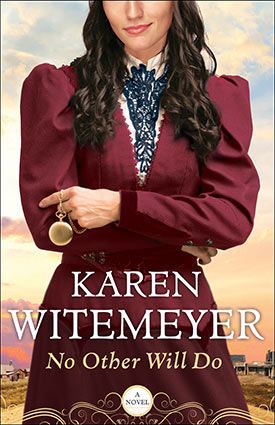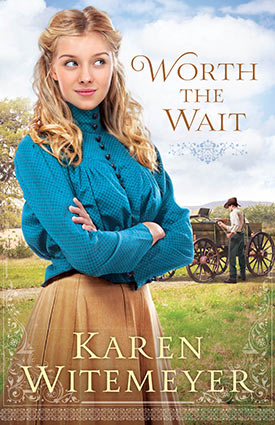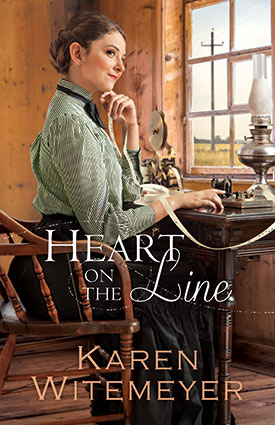Bonus Material: The Story Behind the Story
What inspired the idea of a women's colony in Texas?
The idea for the women's colony described in No Other Will Do came from an old 1951 movie called Westward the Women. I first saw this movie on television on an old movie channel when I was in high school. It made such an impact on me, that it still lingered in my mind twenty-plus years later. In the film, a wagon train full of women crossed the country to the Oregon territory to claim husbands. They had a male trail boss, but the rest of the travelers were women. They relied on each other and overcame incredible hardship and trials to make it through. There is one scene where one of the ladies goes into labor in a wagon that has a broken wheel. All the other women surround the wagon and lift it off the ground to make it level in order to ease the birthing. The message was powerful to me – women might not be as physically strong as men, but get enough of them together, and there is nothing they can't accomplish. That is the idea Emma puts into action when she and her aunts start the women's colony of Harper's Station.

In the late 19th century, women had very few rights. They could not vote. Very rarely were they allowed to work outside the home. They were dependent on fathers, brothers, husbands. And if those men were cruel or dead, the women were left with very little recourse.

In No Other Will Do, Emma Chandler is a strong-minded female with a compassionate heart who has grown tired of seeing women overlooked and abused by a system that caters to men. So she creates a place where women can come for a fresh start. Women escaping cruelty. Women alone, who have no honest way to support themselves or their children. Women looking for a place to practice a trade normally only acceptable for men. All are welcome as long as they agree to pull their weight in the community with honest labor and to help any sister in need. Following in her late father's footsteps, Emma runs the bank and the town, offering loans and compassion to women in need. But when an outlaw bent on running them out of town threatens the safety of her ladies, she is forced to admit that she might need a man's help after all. And there is only one man she trusts – Malachi Shaw.

In Worth the Wait, Benjamin Porter has fallen hard for shopkeeper, Victoria Adams. A savvy entrepreneur, Tori is the ideal partner for his business and his life. Too bad she's against courtship. But Ben is patient, believing a life with Tori to be worth the wait. When an accident strikes, however, what once was a chance at love may be lost forever.

The inspiration for Heart on the Line came way back in 2011 when I was doing research on telegraph communication for an older book. I stumbled upon a novel written in 1879 by female telegraph operator Ella Cheever called Wired Love.
Apparently many operators were women in the late 19th century, and they were often identified as such by the delicacy of their “sounding” on the wires. The hero in Miss Thayer’s novel, Clem Stanwood, knows right away that the operator at the “B m” station is female.
Nattie Rogers is intrigued by the mysterious “C” at the “X n” station and seeks out conversations that soon turn flirtatious. These two telegraph operators fall in love over the wire without ever laying eyes on one another.


There is one scene about halfway through the book that served as my inspiration for Heart on the Line. A case of mistaken identity had scared Nattie off, but Mr. Stanwood arranges a visit to her boarding house, and while sitting amongst others in the parlor, he begins tapping out code with his pencil against a marble table top. Nattie recognizes her call name and, taking up a pair of scissors, drums out her own answer. They carry on an entire conversation this way with no one else in the parlor suspecting their action were anything more than idle tapping. Until, that is, Mr. Stanwood reveals himself to be the real “C”.
Nattie jumps to her feet and exclaims aloud, “What do you mean? It cannot be possible!”
Don’t you love it? Hysterical!
Of course everyone else in the room thinks she’s lost her mind except the hero who crosses the room to take her hand. Awww…

Wired Love: A Romance of Dots and Dashes was a best selling book for over 10 years. And why not? The story is timeless. Remember You’ve Got Mail, which was adapted to e-mail from The Shop Around the Corner where Jimmy Stewart did his courting through letters? Very similar premise. And there are so many parallels to dating in today’s “wired” world. Can you trust that she looks like her description? Is he a gentleman or a stalker? How about the awkwardness of the first face-to-face meet? And with all the abbreviations used on the telegraph lines, it reminded me of the text speak our kids use today. It is really rather eerie how easily Ella Thayer’s story translates to our contemporary society 130 years after it was written.
In Heart on the Line, I had a great deal of fun creating situations where my two telegraph operators communicated through coded tapping without anyone else being able to understand the significance of their private conversations.
You never know when a random research trail will lead to the perfect plot for a new book.


